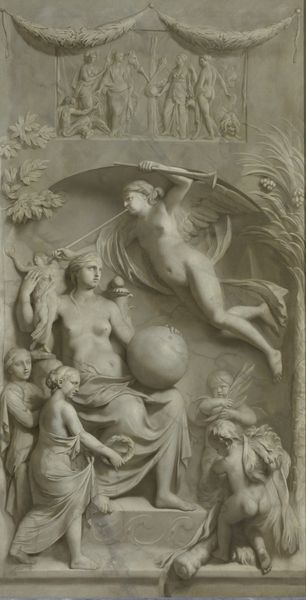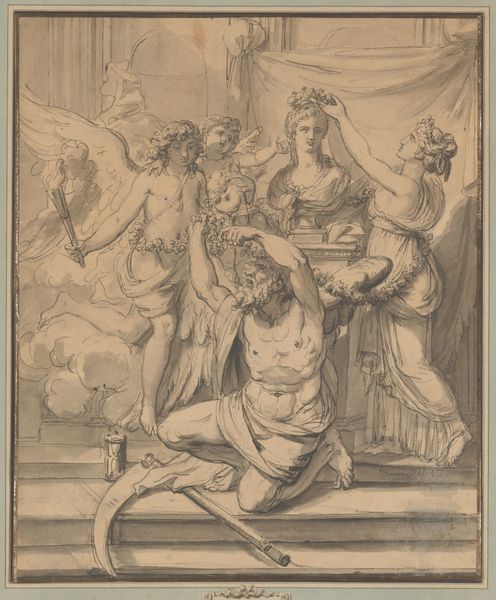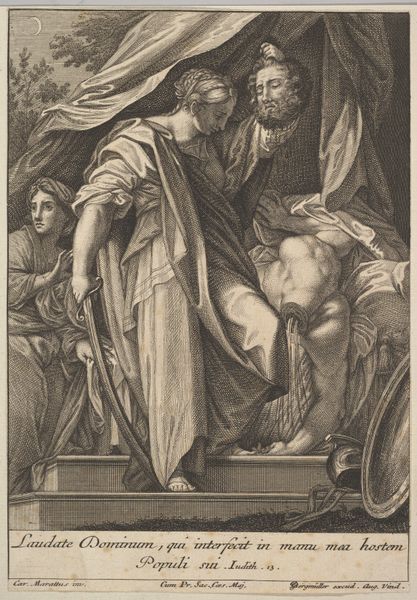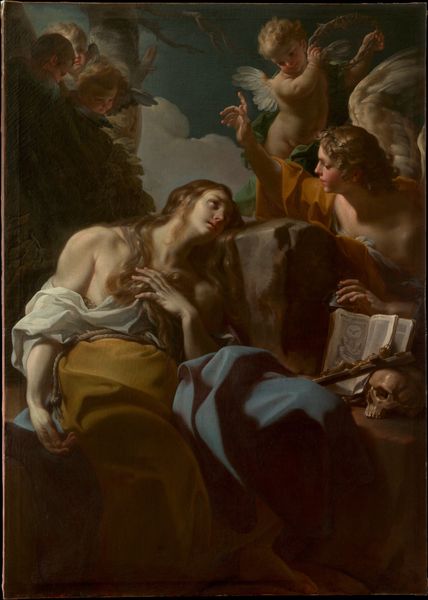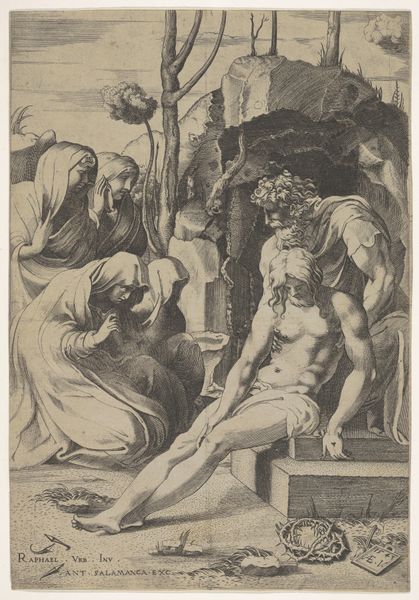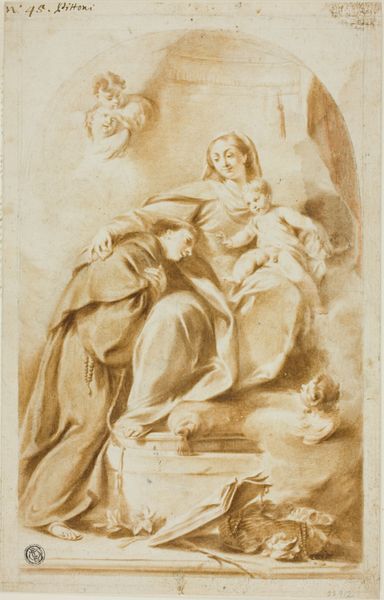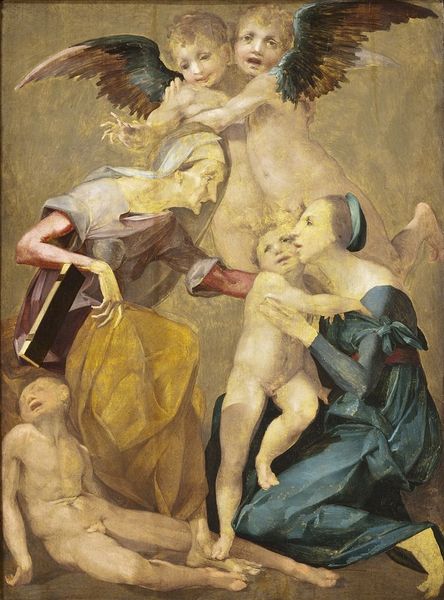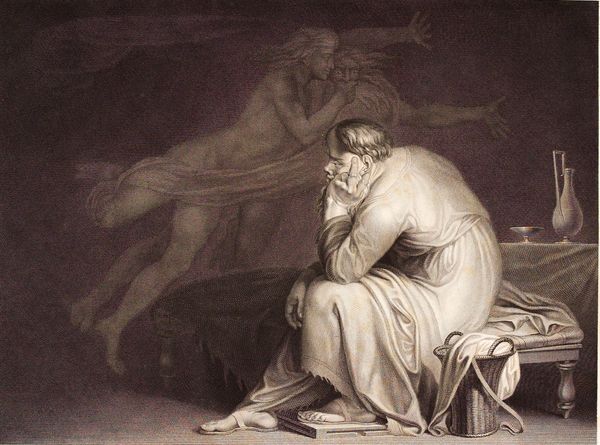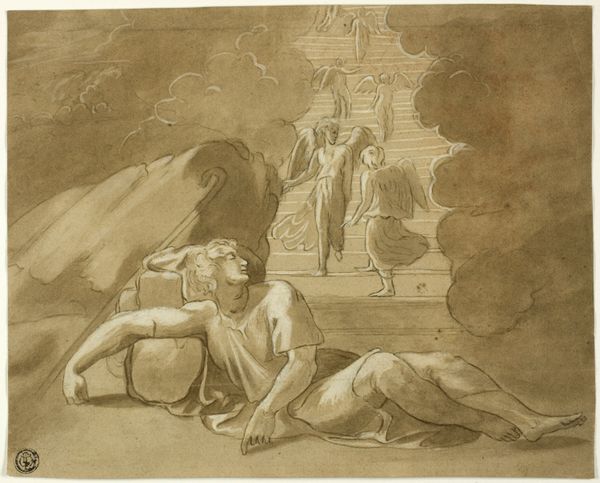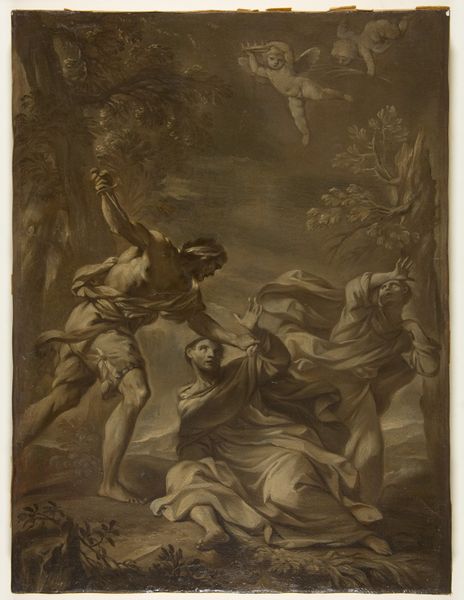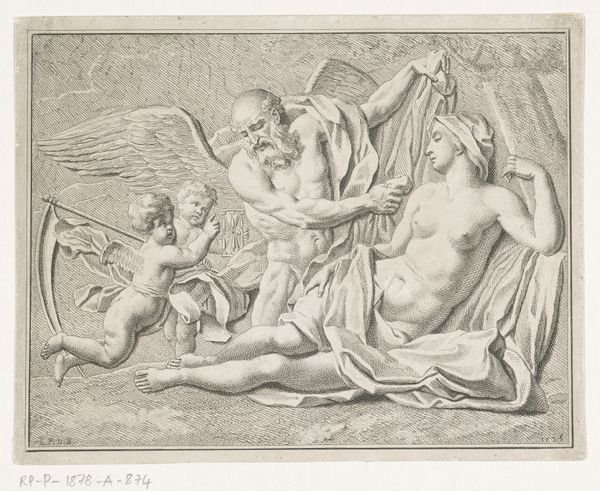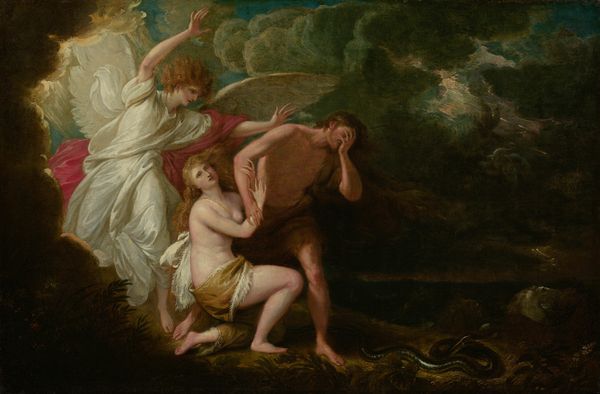
relief, sculpture
#
neoclacissism
#
sculpture
#
relief
#
charcoal drawing
#
sculpture
#
history-painting
#
charcoal
Dimensions: 88 × 65.5 cm (34 3/4 × 25 3/4 in.)
Copyright: Public Domain
Curator: Bernardino Nocchi's rendering of the Deposition, dating back to 1800, captures a pivotal moment. It is after Antonio Canova's marble depiction, now residing here at The Art Institute of Chicago. Editor: It has a haunting serenity, doesn't it? The figures emerge softly as forms from the flat space, seemingly carved from chalk dust itself. Curator: The scene is heavy with archetypes of grief, and loss. We have the inert body, the ministering figures and the weeping angels that collectively signal divine suffering in earthly experience. Consider how gestures create links to our common emotional vocabulary of distress. Editor: Yes, and in this visual vocabulary, it is so precise. Nocchi manages the emotional drama with an impressive restraint, the composition using line and subdued color to communicate much feeling in this piece, especially considering it's charcoal. See how the light delicately falls on each curve, creating almost tactile sensations of grief. Curator: Look to the symbolic details - the shroud, a visual promise of resurrection, that crosses generations. The figures in their lament are almost ghostly versions, not anchored by reality but grief. Even the cross itself becomes an extension of loss here. Editor: Absolutely, and notice the arrangement, how each figure is strategically placed and the whole composition works towards a unified pyramidal form – stability amid devastation. Its elegance transcends pure representation. The Neoclassical embrace of line is palpable. Curator: Neoclassical art embraced history paintings with narratives, so one must reflect, what memory of loss, both secular and personal does Nocchi stir in the modern consciousness with this deposition? What enduring human sentiments are stirred when seeing death given this grace and weight? Editor: For me, it comes down to a profound sense of contained emotion, and what this form communicates regarding humanity's ability to maintain restraint, even when confronting raw grief and trauma. Curator: Indeed, it asks viewers across time to recall how a society or person internalizes these universal pains, the way tragedy binds us as a singular, feeling people. Editor: So in this moment, what could easily devolve into an overload of pain and sadness finds its resolution as formal beauty, it truly elevates beyond grief into an image about human endurance.
Comments
No comments
Be the first to comment and join the conversation on the ultimate creative platform.

